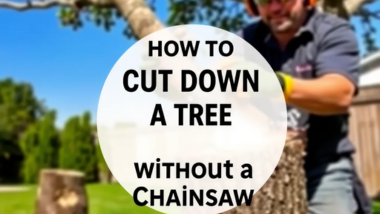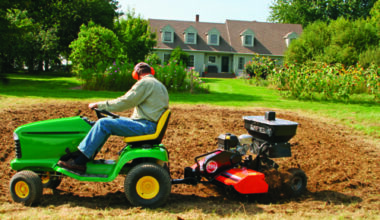Are your roses blushing a bit too crimson? Or perhaps the leaves of your prized begonias are looking a bit under the weather, losing their usual vibrant hue. Hey, it happens! It’s not always sunshine and rainbows in our green havens – sometimes we have uninvited guests like pests or diseases that can turn our horticultural dreams into a botanical nightmare.
Like human ailments, plant diseases also join the “seek and destroy” mission towards healthy growth. But when this happens in our gardens, there’s no need for panic; rather let’s pull ourselves together and play doctor – don’t worry, no medical degree required!
We’ve got just what you need to nurse your green friends back to health: from diagnosing the problem correctly, choosing appropriate treatment options or even preventive measures against future infestations. Each step involved in learning how to treat diseased plants is important and will be explored further here in this blog post.
Identifying the Symptoms of Diseased Plants
When it comes to treating diseased plants, the first step is always identifying the symptoms. Taking a close look at your plants can give you valuable clues about what might be wrong. Look out for:
- Wilting leaves
- Discoloration
- Spots
- abnormal growth patterns.
These signs can indicate various plant diseases such as fungal infections, viruses, or pest infestations.
Analyzing Environment and Soil Conditions
Once you’ve identified the symptoms, it’s time to assess the environment and soil conditions in which your plants are growing.
Are they receiving enough sunlight? Is the soil well-drained? Are there any underlying factors that could be contributing to their susceptibility to disease? Understanding these conditions will help you determine appropriate treatment methods.
Selecting Appropriate Treatment Methods for Specific Diseases
Different plant diseases require different treatment methods. For fungal infections like powdery mildew or black spot disease on roses, organic remedies such as neem oil or baking soda spray can be effective in controlling and preventing further spread.
On the other hand, viral diseases have no cure and often require removing infected plants to prevent contamination.
Implementing Chemical Treatments Safely and Effectively
Chemical treatments should only be used when necessary and with caution. Always read labels carefully before applying any pesticides or fungicides.
Follow instructions regarding dosage rates and safety precautions to ensure effective treatment without harming your plants or yourself.
Applying Organic Solutions to Plant Diseases
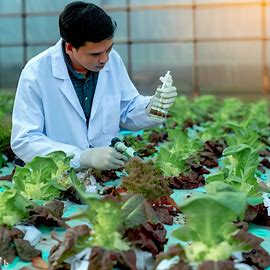
If you prefer organic solutions for treating diseased plants, there are several options available.
Garlic spray is known for its antifungal properties while insecticidal soap helps control pests safely without harming beneficial insects like ladybugs.
Common Plant diseases and their treatments:
- Powdery Mildew: Neem oil spray or a mixture of baking soda and water.
- Black Spot Disease on Roses: Prune affected areas and use organic fungicides.
- Viral Diseases: Remove infected plants to prevent spreading.
Pruning and Care Techniques to Prevent Disease Spread
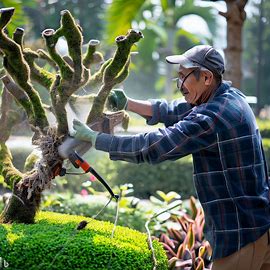
Proper pruning techniques can help prevent the spread of disease.
Removing infected plant parts, such as diseased leaves or stems, will stop the disease from spreading further.
However, make sure to sterilize your pruning tools between cuts to avoid unintentionally introducing pathogens to healthy plants.
Optimizing Watering Schedules and Techniques to Ensure Plant Health
Watering your plants correctly is crucial for maintaining their overall health. However, overwatering can lead to root rot while underwatering stresses the plant, making it more susceptible to diseases.
Find the right balance by considering factors like soil moisture levels, plant type, and weather conditions.
Monitoring Post-Treatment Progress and Recovery
After implementing treatment methods, it’s important to monitor your plants’ progress closely. Look out for signs of improvement or any new symptoms that may indicate that the treatment needs adjustment.
Regular observations will help you determine if additional action is necessary for complete recovery.
Maintaining Healthy Growth Practices After Disease Eradication
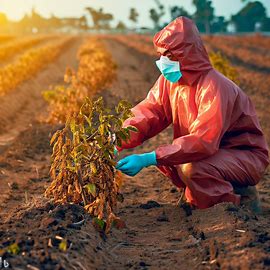
Once you have successfully treated diseased plants, it’s vital to maintain healthy growth practices moving forward.
This includes providing adequate nutrition through proper fertilization techniques tailored specifically for each plant type.
Additionally, practicing regular pest control measures can help prevent future infestations.
Fostering a Balanced Ecosystem Around Plants To Deter Pests
Creating a balanced ecosystem around your plants helps deter pests naturally without relying solely on chemical treatments.
Introduce beneficial insects, like ladybugs or lacewings, which feed on pests such as aphids. Planting companion plants that repel insects can also be beneficial.
Considering Professional Help for Severe Cases or Valuable Plants
In severe cases or when dealing with valuable plants, it may be wise to seek professional help. Certified arborists and plant healthcare specialists possess the expertise and experience needed to tackle challenging diseases effectively while ensuring the well-being of your plants.
Tips on Using Proper Equipment During Treatment Process
1. Using proper equipment during the treatment process enhances its effectiveness and protects your safety.
2. Make sure to use high-quality sprayers for applying treatments evenly.
3. Wearing protective gear like gloves and goggles is also essential when handling chemicals.
Educating on Common Misconceptions About Plant Diseases
Many misconceptions surround plant diseases, so educating yourself about them can save you time, effort, and even money. For example, not all yellowing leaves are a sign of disease; they could simply indicate natural aging or nutrient deficiencies.
Knowledge empowers you to make informed decisions regarding treatment methods.
Closing Thoughts on How to Treat Diseased Plants
When it comes to treating diseased plants, early detection combined with appropriate treatment methods is key to successful recovery.
By following this comprehensive guide and maintaining proper care practices after eradication, you’ll ensure your plants thrive in a healthy environment free from disease threats.

